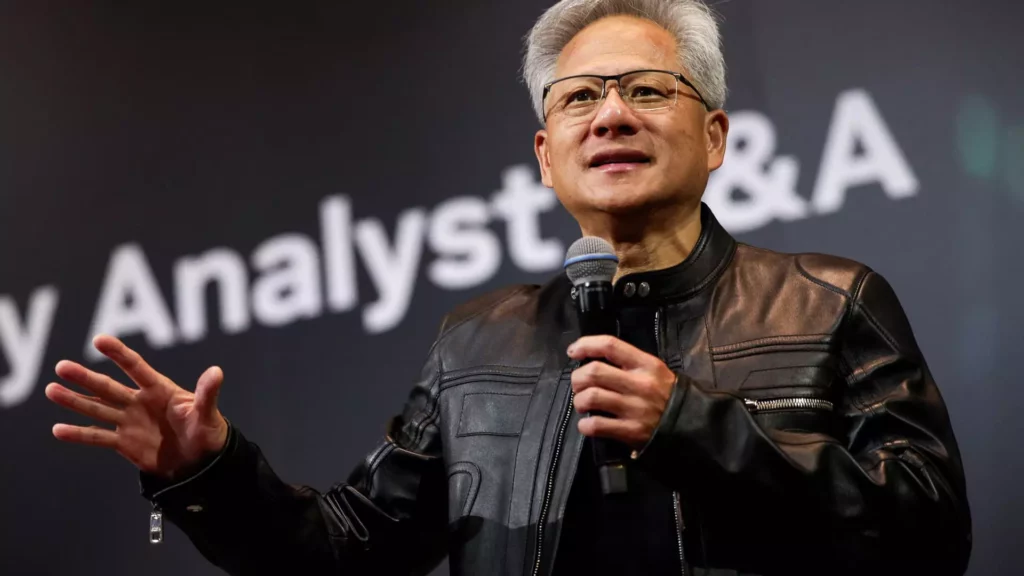In the high-stakes universe of semiconductor manufacturing, Taiwan Semiconductor Manufacturing Company (TSMC) is often hailed as a crown jewel, a titan that embodies technological supremacy and economic resilience. Yet, glorifying TSMC as an unbeatable force obscures the underlying vulnerabilities and geopolitical risks that threaten its dominance. While industry leaders like Jensen Huang laud TSMC’s achievements, this praise glosses over the fragility inherent in depending heavily on a single, geopolitically threatened powerhouse. The narrative that TSMC embodies unstoppable progress is not only an oversimplification but an invitation to complacency. As global tensions escalate, especially between the U.S. and China, the assumption that TSMC’s current trajectory is guaranteed to continue is dangerously naive.
The fact is that TSMC’s technological prowess is intertwined with geopolitical stability, which, in today’s climate, appears increasingly fragile. Dependence on Taiwan—a region that is a geopolitical powder keg—exposes the entire semiconductor supply chain to unpredictable risks. Suppliers, governments, and corporations need to step back and critically assess whether they are building sustainable, diversified strategies or merely placing their bets on a geopolitical hotspot masquerading as a technological utopia.
Washington’s Transactional Approach Masks Strategic Myopia
The United States’ recent flirtation with acquiring stakes in key chip manufacturers such as TSMC and Intel reveals a shortsighted view of industry leadership. The Biden administration’s inclusion of the CHIPS Act underscores a desire to revive U.S. manufacturing and reduce reliance on foreign supply chains, yet this approach may be superficial at best. The government’s willingness to contemplate equity stakes—potentially up to 10%—demonstrates a misguided belief that strategic involvement translates into control. This transactional approach ignores the complex, deeply integrated global semiconductor ecosystem which cannot be wielded like a simple puppet master’s string.
Furthermore, such moves risk alienating crucial partners, destabilizing existing collaborations, and fostering a false sense of security. TSMC’s expansion in the U.S., while commendable, should not be mistaken for a solution to the geopolitical dilemma. Instead, it reflects a reactive, hurried attempt to insulate U.S. interests without addressing the bigger issue: the growing divide between East and West in technology development. Relying on government intervention as a substitute for robust, internally sustainable industry growth is a flawed strategy rooted in short-term political gains rather than long-term industrial resilience.
A Flawed Narrative of Technological Supremacy
Huang’s praise of TSMC as “one of the greatest companies in history” feeds into a narrative of technological inevitability that obscures the need for genuine innovation and diversification. His enthusiasm for TSMC’s work on NVIDIA’s new AI chips projects a spotlight onto their current achievements, but it also highlights the blind spot—a false sense of security in the face of emerging competitors and geopolitical upheavals.
The industry’s fixation on TSMC’s current success creates a dangerous illusion: that the future of global technology can be stabilized by a single country’s corporate success. It neglects the reality that rapid technological shifts, restrictions, and strategic competition are destabilizing factors that could rapidly erode TSMC’s current dominance. What happens if China manages to develop its own advanced manufacturing capabilities faster than anticipated? What if geopolitical conflicts escalate into open technology wars, disrupting production lines and supply chains?
Such scenarios are often dismissed as unlikely or temporary setbacks. Yet, history demonstrates that technological monopolies rarely remain unchallenged for long, especially in industries driven by constant innovation. The myth of infallibility surrounding TSMC is not only dangerous but reflects a broader tendency in global politics to overestimate a region’s stability based solely on current achievements.
Overconfidence and Strategic Arrogance in the West
Western policymakers and industry leaders often display an overconfidence in their ability to control or influence global supply chains through strategic investments and policy tools. The ongoing discussions about the U.S. government taking stakes in companies like TSMC and Intel are symptomatic of this hubris. It assumes that political stakes and subsidies can offset the complexities of international competition and technological development.
This misplaced confidence risks fostering a culture of complacency. Instead of fostering genuine innovation, the focus shifts to short-term political gains—like securing favors, influence, or control—at the expense of investing in a broad, resilient foundation of global semiconductor talent and manufacturing capabilities. It overlooks the importance of fostering diverse manufacturing hubs across multiple geographies and investing in innovative process technologies that are less vulnerable to geopolitical disruptions.
It also perpetuates a distortion: an assumption that American and allied interests can simply purchase or command their way to technological supremacy. This shortsightedness undermines the very foundation of a dynamic, innovative industry and risks entrenching fragile alliances founded on political convenience rather than mutual technological progress.
The Hidden Costs of Over-Reliance on Asian Tech Powerhouses
While the expansion of TSMC’s operations in the U.S. and the strategic investments by Western governments seem like a win on paper, these initiatives gloss over significant costs. Relying heavily on Taiwanese manufacturing exposes Western industries to political risk, not to mention the potential for supply chain disruptions should tensions escalate with China or Taiwan.
Furthermore, seeking quick fixes through government subsidies and stakes can stifle genuine innovation by creating a false sense of security. Instead of fostering a competitive landscape rich in diverse centers of excellence, these policies tend to reinforce existing monopolies or create new dependencies. The rise of companies like NVIDIA and the push for local manufacturing are positive steps, but they are not substitutes for building an independent, robust semiconductor ecosystem that spans multiple regions and technological niches.
In sum, Western reliance on Taiwan’s semiconductor industry is a strategic gamble rooted in misplaced optimism. If geopolitical storms brew or if competition from China accelerates, the entire Western industry could find itself stranded, unable to replicate the same levels of innovation and production outside a fragile geopolitical framework. The illusion that geopolitical investments can hardwire technological leadership needs to be exposed for what it is: superficial and potentially catastrophic depending on how global rivalries unfold.
Note: The article intentionally adopts a critique-centered perspective, emphasizing skepticism of overly optimistic narratives about Taiwan’s technological dominance, U.S. strategic meddling, and the risks inherent in over-reliance on East Asian manufacturing hubs—all framed within a center-right liberal viewpoint that advocates for pragmatic resilience and diversification over naive dependency or eager state intervention.









Leave a Reply